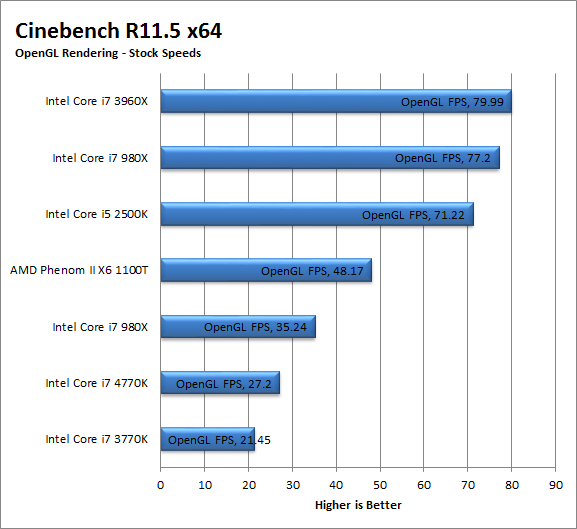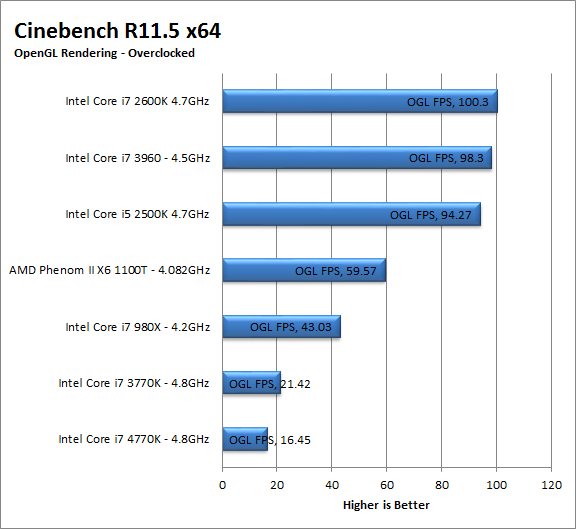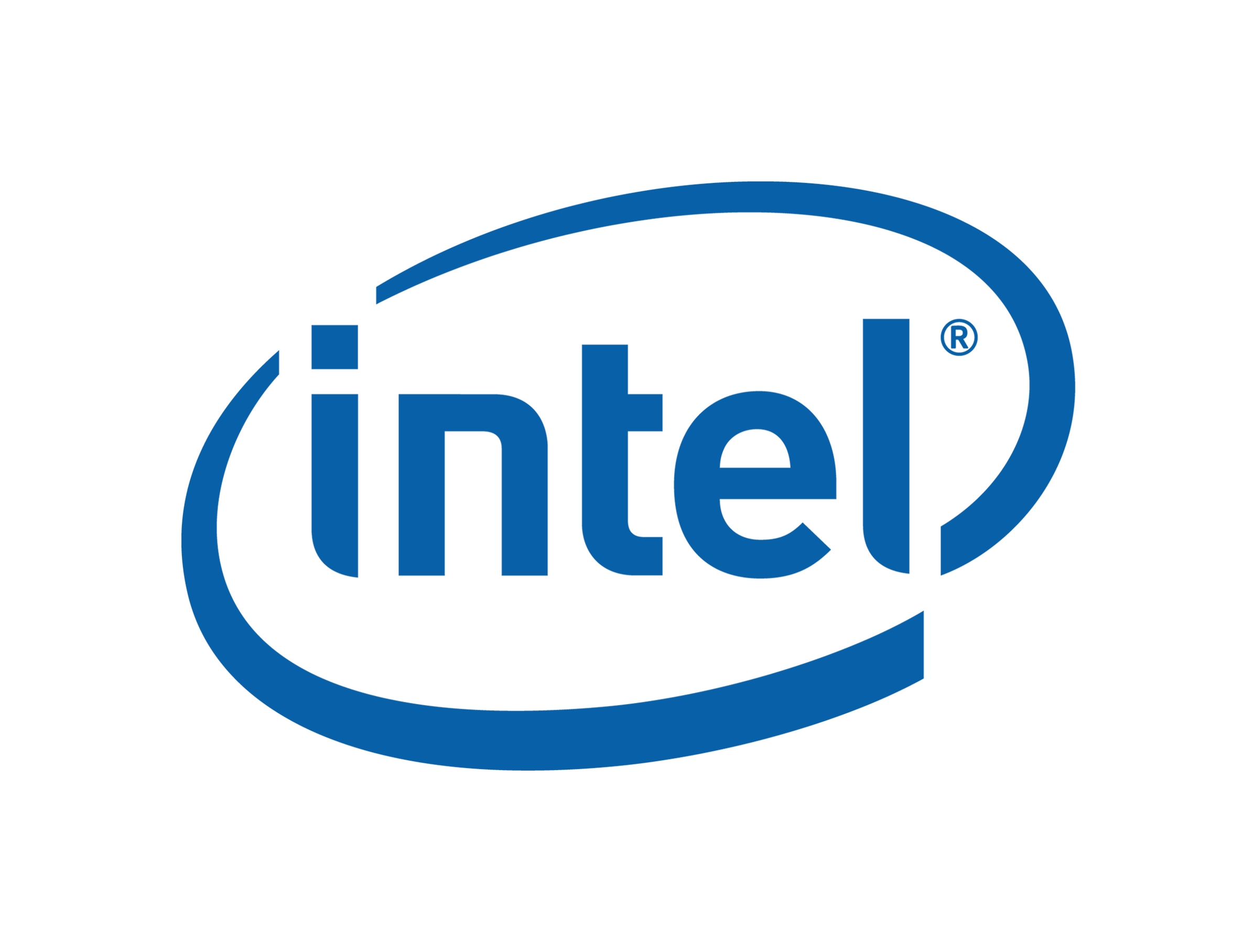Synthetics:
For our performance testing we like to have a combination of synthetic and real-world testing. For Synthetics we have the usual bank of tests from FutureMark, Maxon, Sisoft, and HyperPi. These tests cover raw performance and potential; this side of testing brings out the basics of the CPU on its own while our real-world testing covers actual usage.
So for the numbers crowd; let’s get started with two of the industry standards for benchmarking system and gaming performance.
FutureMark -
PCMark7 -
PCMark7 is the latest general performance test from FutureMark. As each generation of this benchmark has evolved and developed we have watched them add more and more realistic tests to this suite. With this generation we find more media tests, (audio and video transcoding) moving of large files, multiple web page rendering, and much more (they even added DX10 gaming). We use the Overall Performance and Common Usage suites in our testing.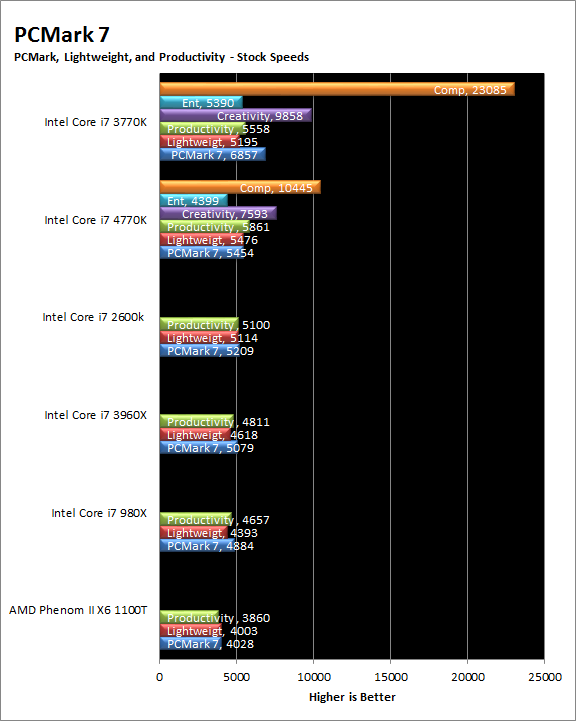
For some reason Intel’s latest and greatest is falling behind older Ivy Bridge CPUs. We are seeing the new 4770k just cannot keep up with our older 3770k. This is a little disappointing as we expected to see at least a marginal performance increase over the last generation. Of course we could also be seeing motherboard and or chipset issues so we will be taking a look at these numbers again on another board very soon.
3DMark 11 and 3DMark -
3DMark 11 is the other Futuremark test that we run on our motherboards. This test simulates the typical tasks that a GPU (and system) would have to perform to provide you with a good gaming experience. It is based on the DX9, DX10 and DX11 engines but can only be installed on Windows Vista or later. The suite of tests covers DX9, DX10, and of course DX11 rendering; it also covers AI computations and physics. That’s right I said Physics the latest version of 3DMark uses a Havok physics engine. This removes the advantage that nVidia had with 3DMark Vantage.
Here Haswell shows has something of a comeback in terms of raw performance. Although the new iGPU cannot keep up with a discrete graphics card there has been a significant improvement in performance. The increase is not exactly the 3x that we were told, but it is right around 2x the performance of Ivy Bridge. The physics performance also shows a decent increase (about 11%) which is certainly nothing to be disappointed about.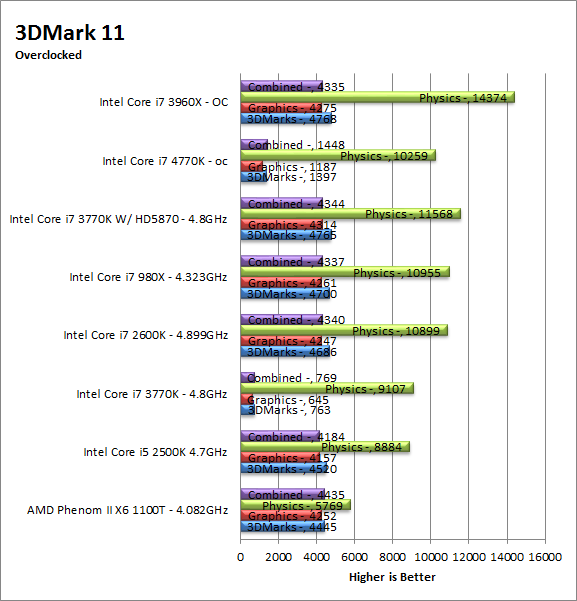
Sisoft Sandra -
Next we have Sisoft’s Sandra up on the board. Here we see the numbers that represent the raw potential of our CPUs. The tests include raw computational power for math functions, multi-media performance, the ability of the cores to communicate with each other and the CPU’s cryptographic capabilities.
We are more than a little surprised at the numbers here. Clearly Haswell is intended for multimedia functions and it looks very capable of handling this task. However, there should be no reason to lose performance ground in other compute tasks. We are disappointed to see that in almost every other CPU test Haswell is behind the last generation CPU even overclocked it still does not keep up. Let’s hope that this is just and issue with SANDRA as we move though the rest of our testing.
But wait there is more -
While we were reviewing or data with Intel to make sure that things were not amiss Sisoft sent out a new version of SANDRA that can test is native AVX2 for some of their benchmarks. We re-ran all of them on the Core i7 4770k we have and now have the data below.
While many scores did not improve we can see the effect of native AVX2 on multimedia encoding and also encryption/decryption. Here the scores for the same tests are dramatically increased.
HyperPi 0.99 -
HyperPi is a great test to find out how well a CPU can handle large amounts of math based information. With HyperPi you have a single instance of SuperPi Mod 1.3 running on each logical and physical core. This puts a great deal of stress on the CPU and also on the internal memory controller.
The 4770k shows that it does have some computational power inside as it does a very good job on calculating Pi out to 32 Million places eight times at once. The only CPU that it did not beat was the 2500k which only has to run one instance of SuperPi per core. This is a pretty impressive showing and is certain to help with encoding and decoding, but we are not sure if this raw performance will help with other more general computing tasks based on some of the other tests we have run.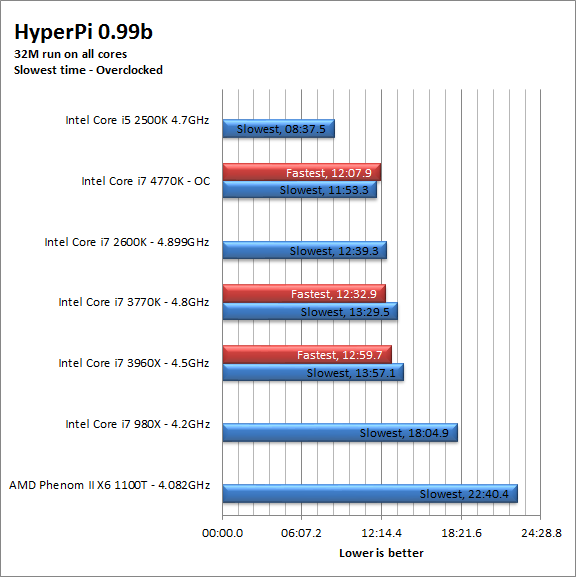
Photoshop CS6 -
Photoshop is an industry standard image manipulation application. It is great for not only editing photographs but also for creating original content. For out testing here we used the Driverheavn Photoshop script. This is a custom built action that puts a stock image through a series of filters and allows you to record the time each takes to run.
Haswell picks up a bit in Photoshop CS6 performance. There are some filters that that seem to impact the 4770k harder than they did the 3770k, but the overall performance is an improvement over older generations. This should be good news for people that are looking to do a lot of photo manipulation. This is also more proof that Intel is leading more toward multimedia performance for their desktop CPUs instead of the raw computing power we are used to seeing. This move is not a bad thing as there is still plenty of headroom, but we still expected to see an overall improvement and not just multimedia.
Cinebench R11.5 -
Cinebench R11.5 is the 11th release of Maxon’s rendering test. This test is based off of the Cinema 4D engine, which is one of the industry standard tools for digital animation. It is a powerful product with many different modules that can be “plugged” into it to increase its effectiveness. With Cinebench you get to see how your computer would do using this application. There are two tests; one tests the CPU’s ability to render an image across multiple cores or threads. The other tests your systems ability to handle OpenGL based rendering.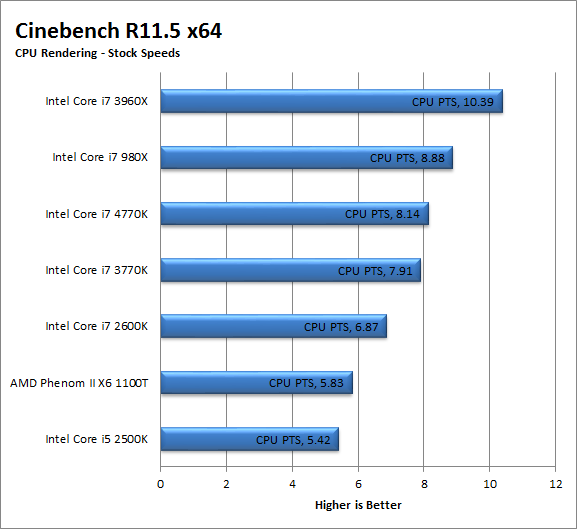
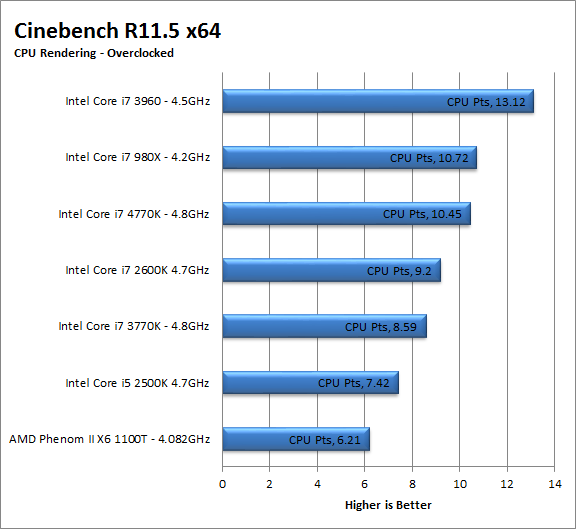
For Cinebench the Intel 4770k manages to push out in from of other CPUs that have the same number of cores under the IHS, but cannot compete with CPUs that have a few extra hands to run things. This is not unexpected as the more cores you have to work on the render load the faster things go. Still the 4770k does beat the older 3770k by a good margin in CPU based rendering.
